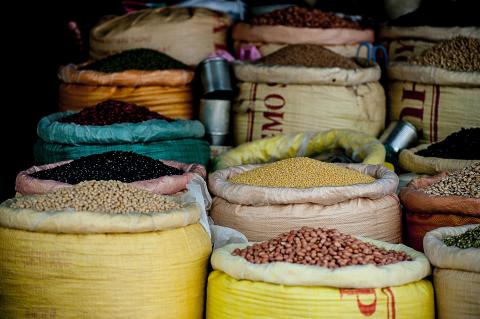Dietary diversity in Bhasan Char relocation camp, Bangladesh: Children and adolescents
This is a summary of the following paper: Das S, Fahim S, Rasul M et al. (2023) Nutritional and dietary diversity status of under-5 children and adolescent girls among forcibly displaced Myanmar nationals living in Bhasan Char relocation camp, Bangladesh: A cross-sectional survey. BMJ Open, 13, e068875. https://www.ncbi.nlm.nih.gov/pmc/articles/PMC10069579/pdf/bmjopen-2022-068875.pdf
This cross-sectional survey of 248 children (aged 6–59 months) and 299 adolescent girls (aged 11–17 years) was randomly sampled from a population of 17,698 forcibly displaced Myanmar nationals residing in Bhasan Char relocation camp. Sociodemographic information, dietary diversity status, length/height, weight, mid-upper arm circumference (MUAC), and head circumference data were collected from all participants.
Children consuming at least four of eight food groups within the preceding 24 hours were deemed to have ‘minimum dietary diversity’. Adolescent dietary diversity was determined using Food and Agricultural Organization ‘Women’s Dietary Diversity Score’ guidelines.
For adolescent girls, severe (14.1%) and moderate (28.8%) stunting prevalence was high. Most consumed starchy staples (98%) and dark green leafy vegetables (79%), but few consumed animal-based proteins or vitamin A- or iron-rich foods. The distribution of dietary diversity did not vary much by nutritional status, with an overall average of 3.1 (SD 1.03) out of nine food groups consumed.
For children aged 6–59 months, severe (8.5%) and moderate (23.1%) stunting was also prevalent. Severe (1.2%) and moderate (10.9%) wasting was more common by weight-for-height than MUAC, which were 0.8% and 8.5% respectively. Only 25% of children aged 6– 59 months achieved minimum dietary diversity.
”œNearly all the children we surveyed consumed diets that were mainly carbohydrate based and poorly diversified, irrespective of their nutritional status.”
Regression analyses showed that no anthropometric indices, for both adolescent girls or children in the study, were significantly associated to dietary diversity scores – which may reflect the generally poor dietary diversity across all groups, making it difficult to compare between each.
Appropriate measures were taken to sample only a single member from each household and validated anthropometry tools, pretested survey questioners, and pretested food frequency questionnaires were used, increasing the validity of this study. The researchers recruited enough participants for the study to be appropriately powered, based on their sample size calculation.
As the data collection period was short (7–12 November 2021), seasonality may skew these results as different periods of the year may present different crop shortfalls. All participants had access to improved drinking water and sanitation systems, which may not be true of comparable settings. There was a 100% response rate, which is unusual, but this may reflect the tightly controlled environment this group has been relocated to.
The findings for these two study groups are important. Both are disproportionally affected by malnutrition, yet they are distinct groups and we cannot extrapolate the findings to other child, youth, or even adult populations in this setting. Diets for these two refugee groups were poor compared to the local population and efforts should be made to improve their long-term nutrient status – through the provision of diversified and micronutrient-fortified rations.


